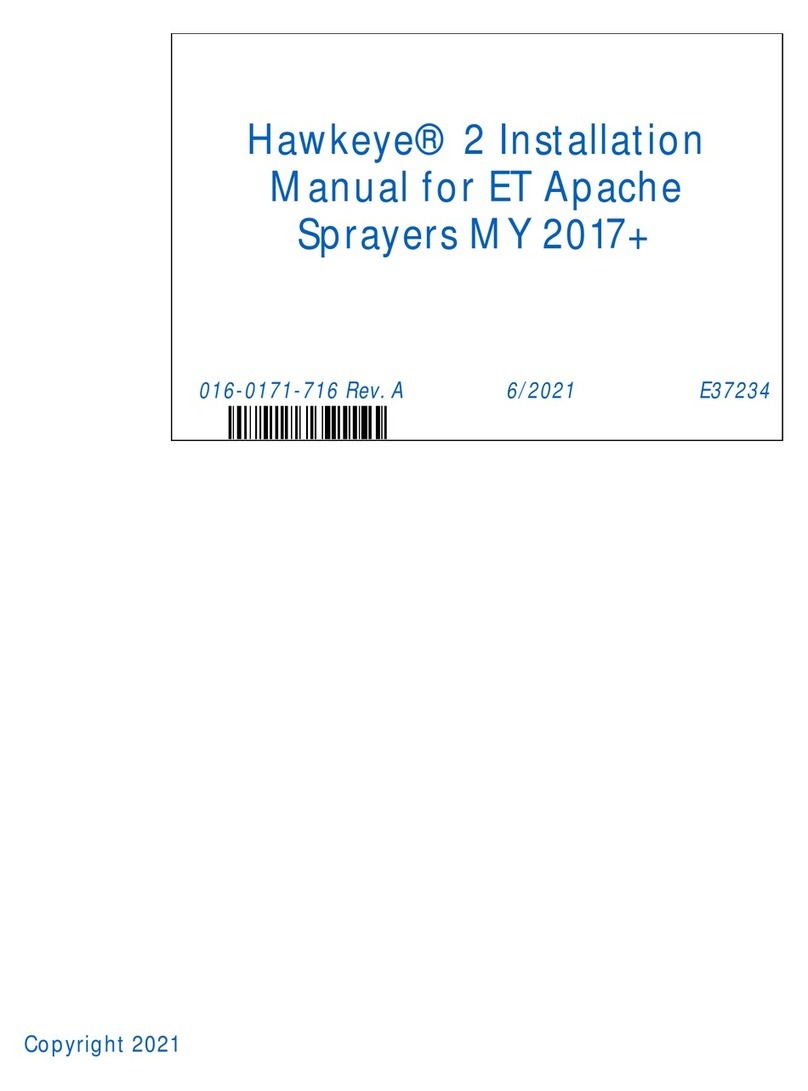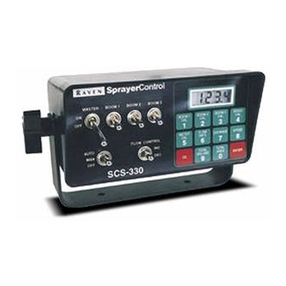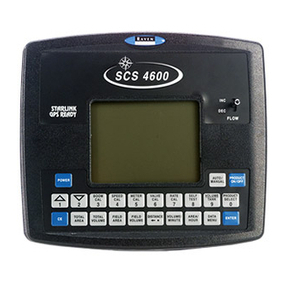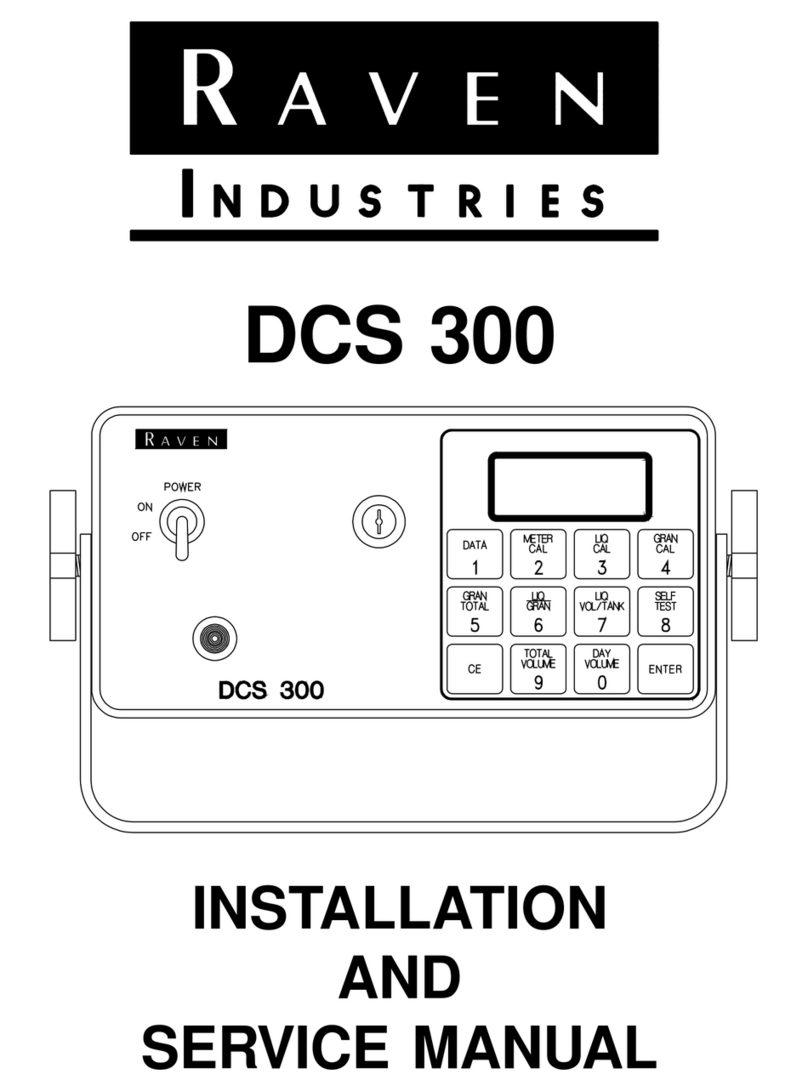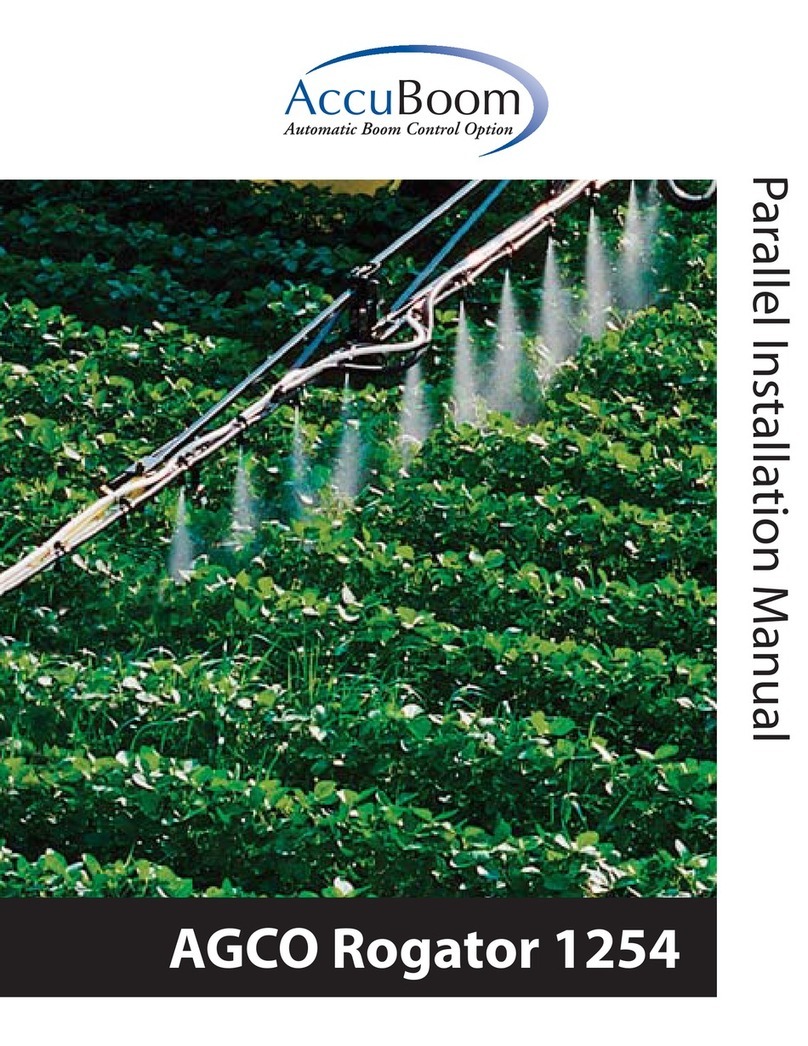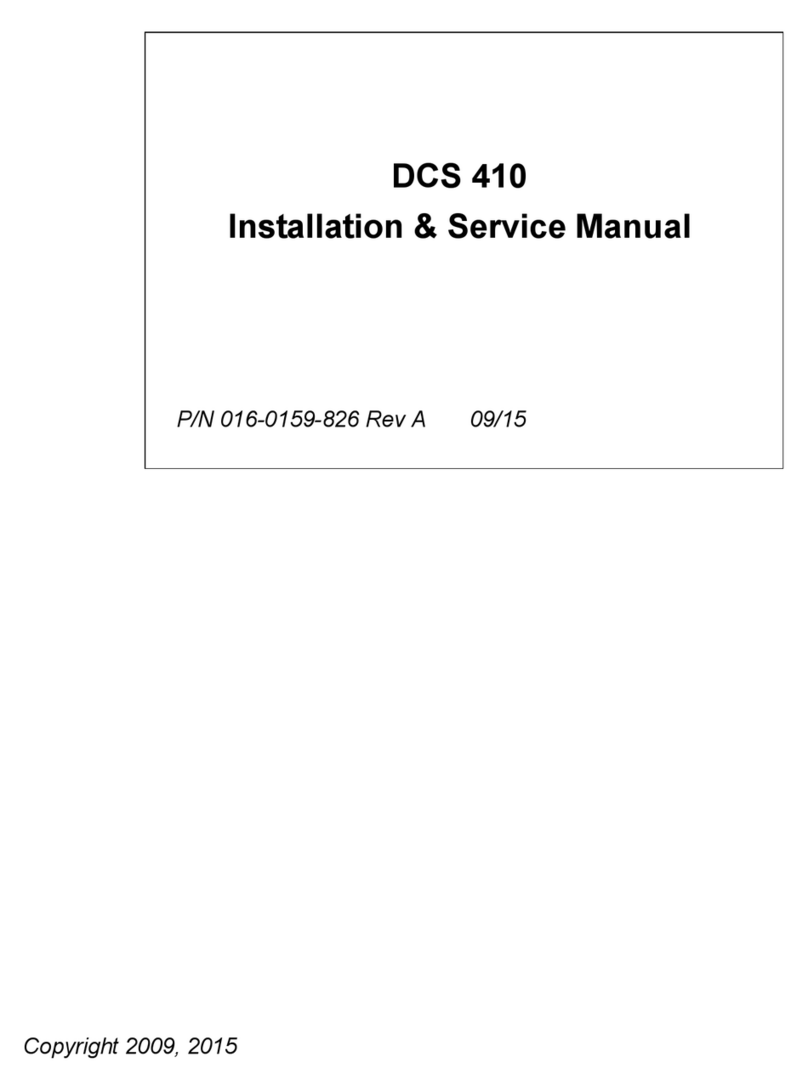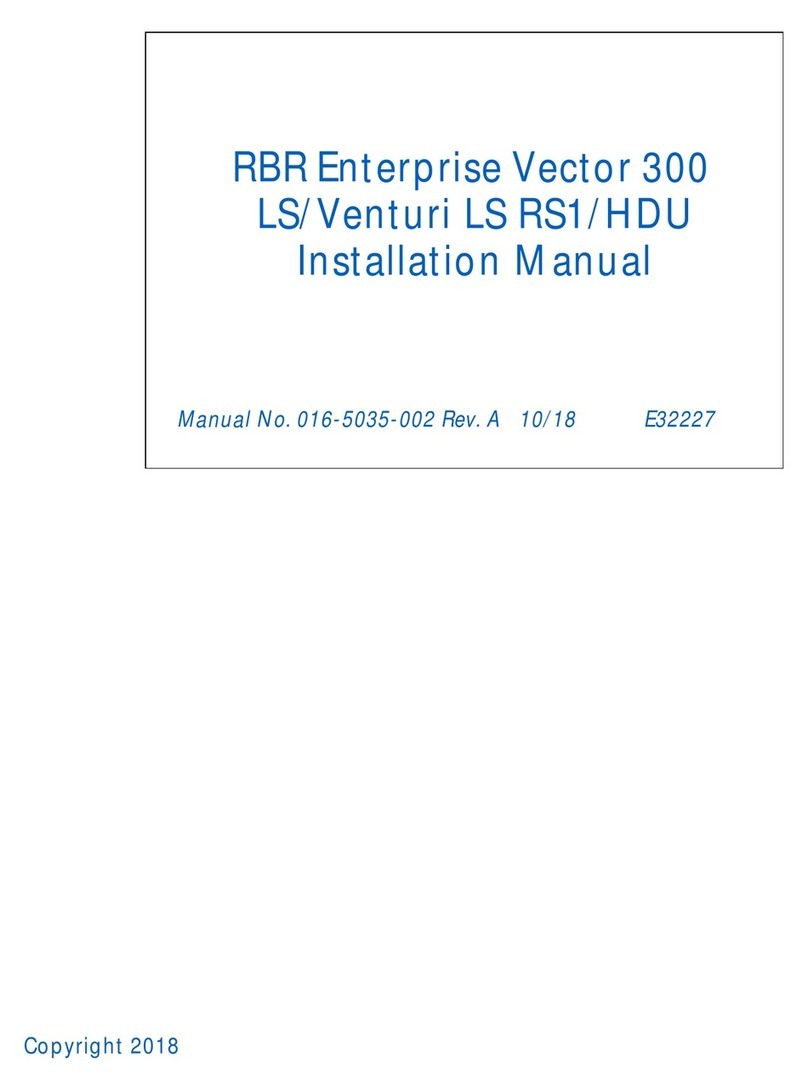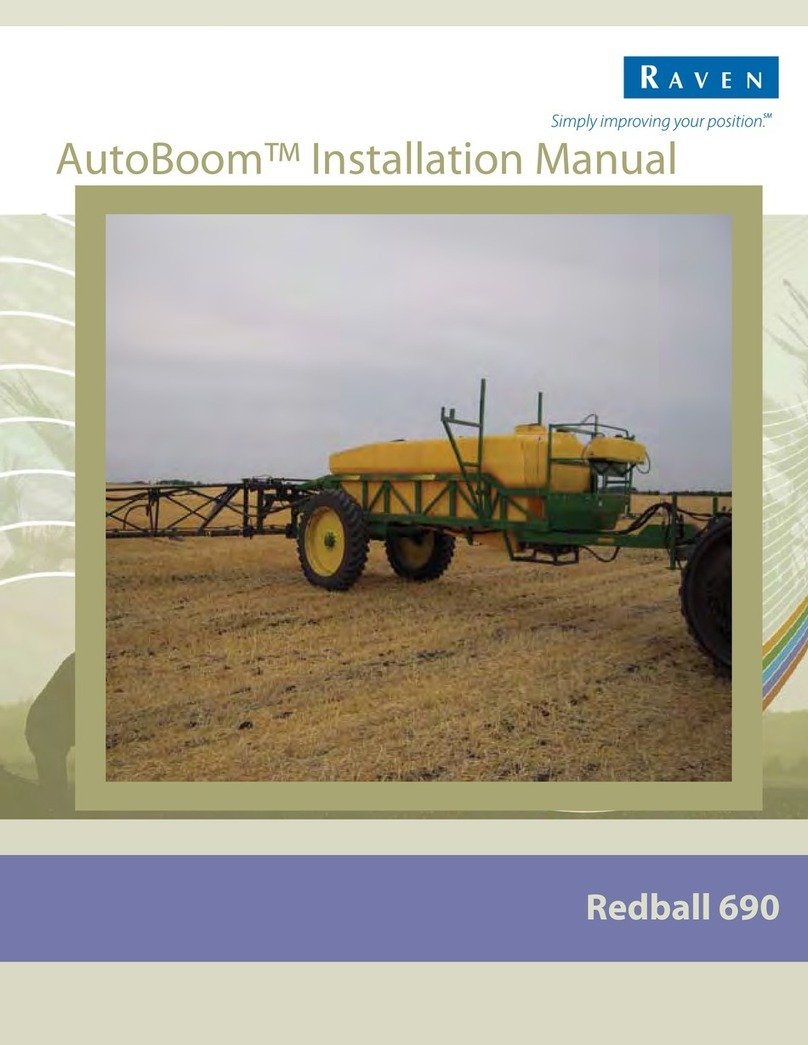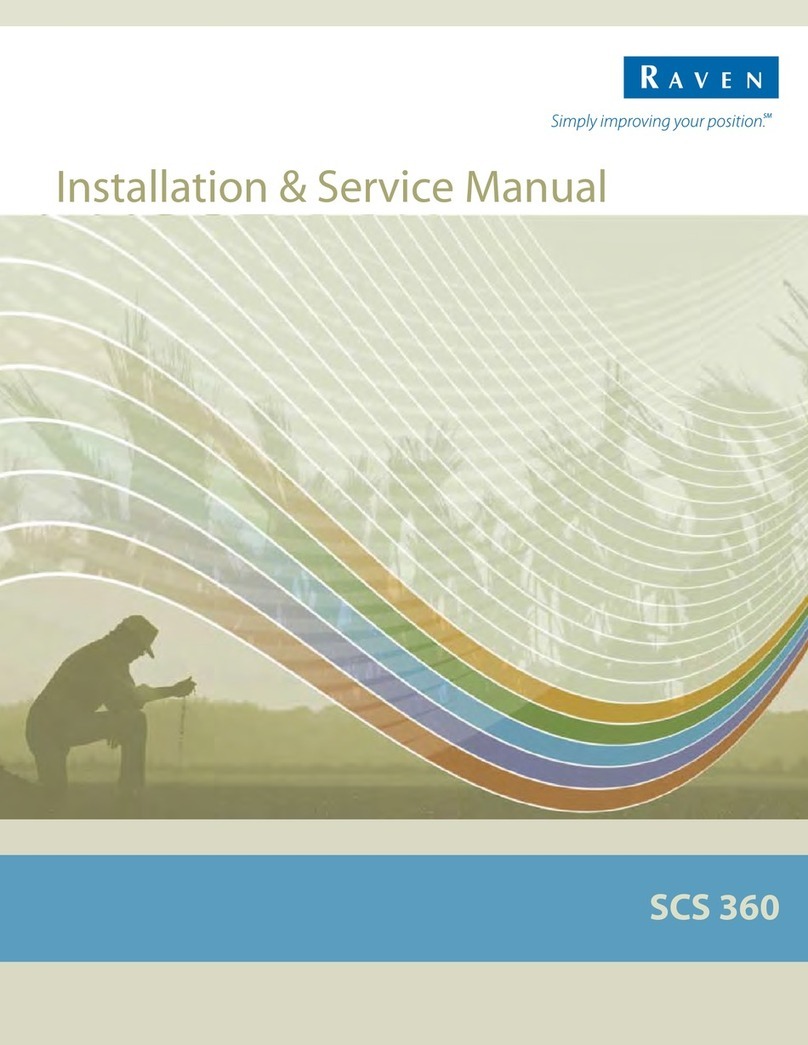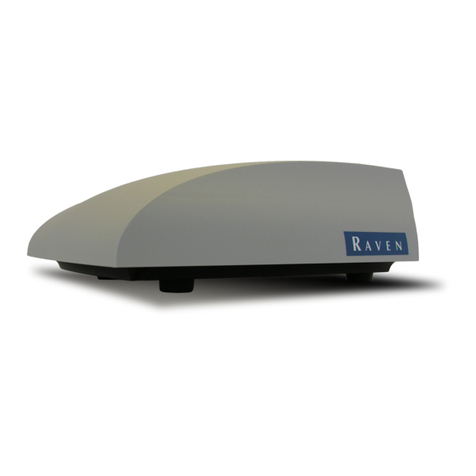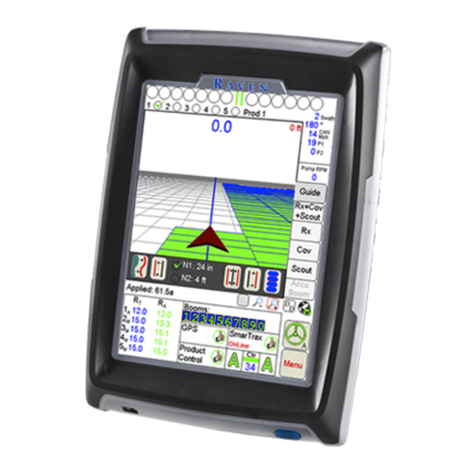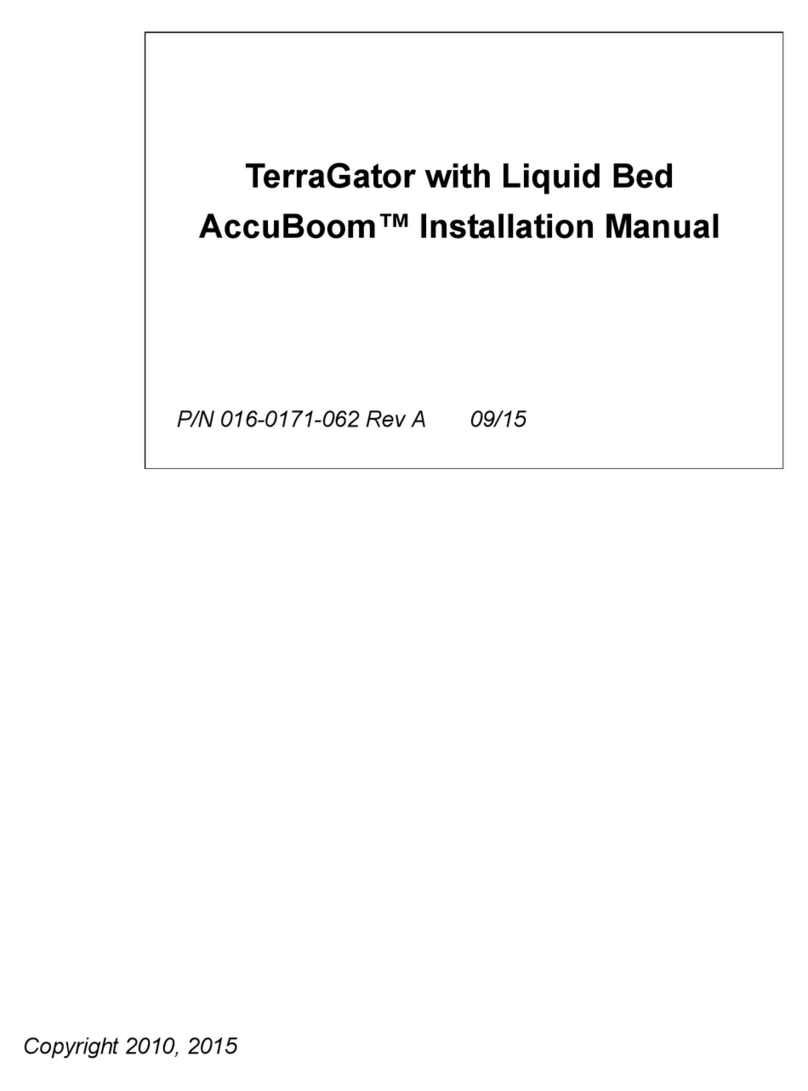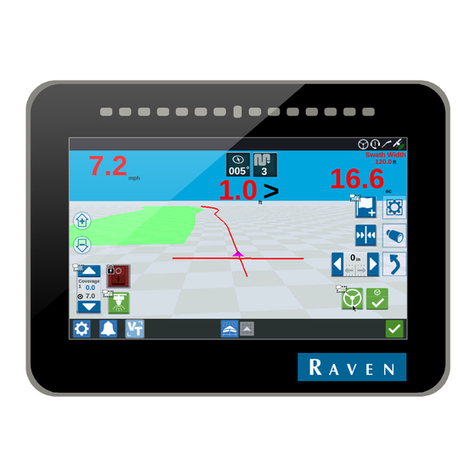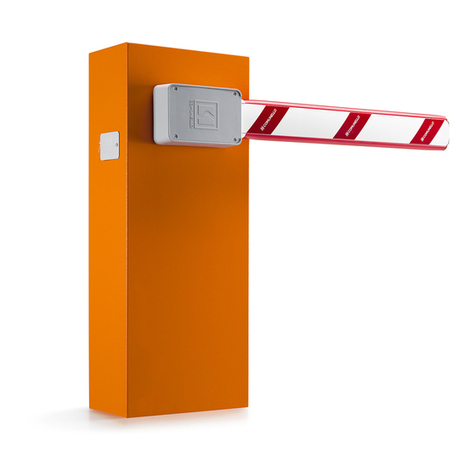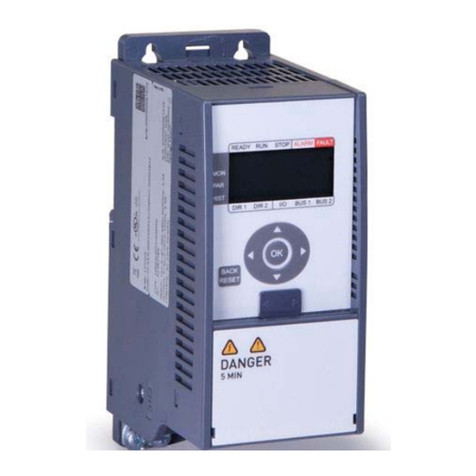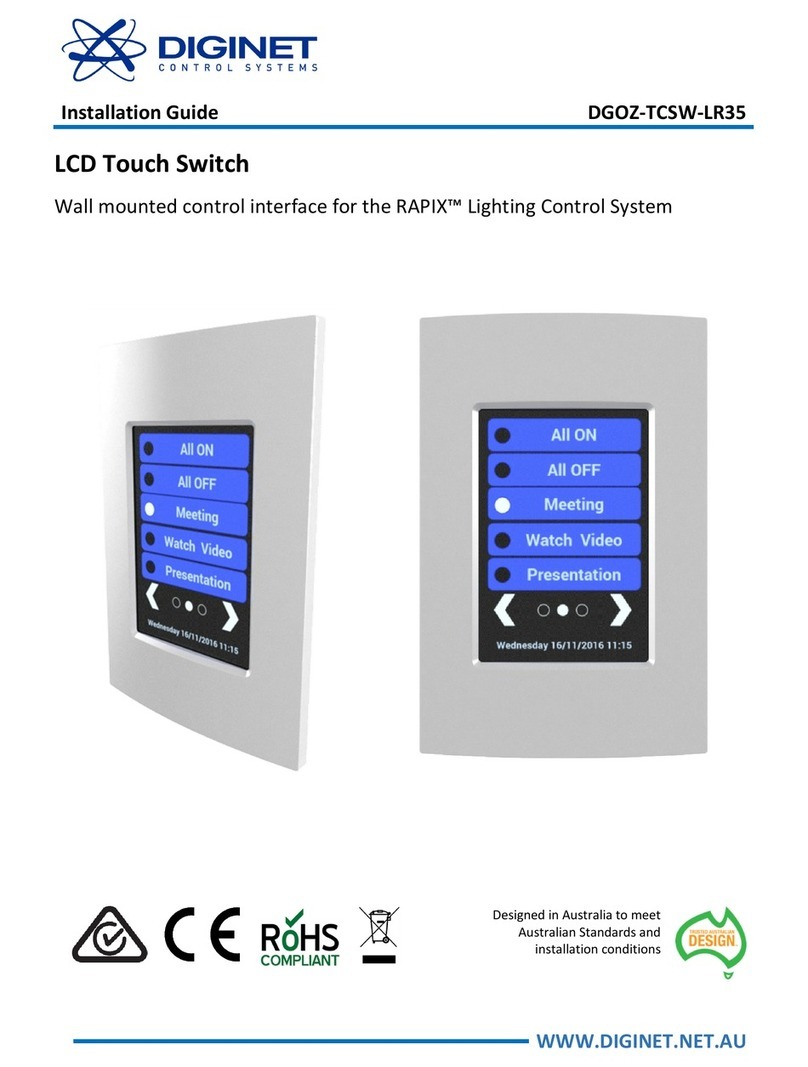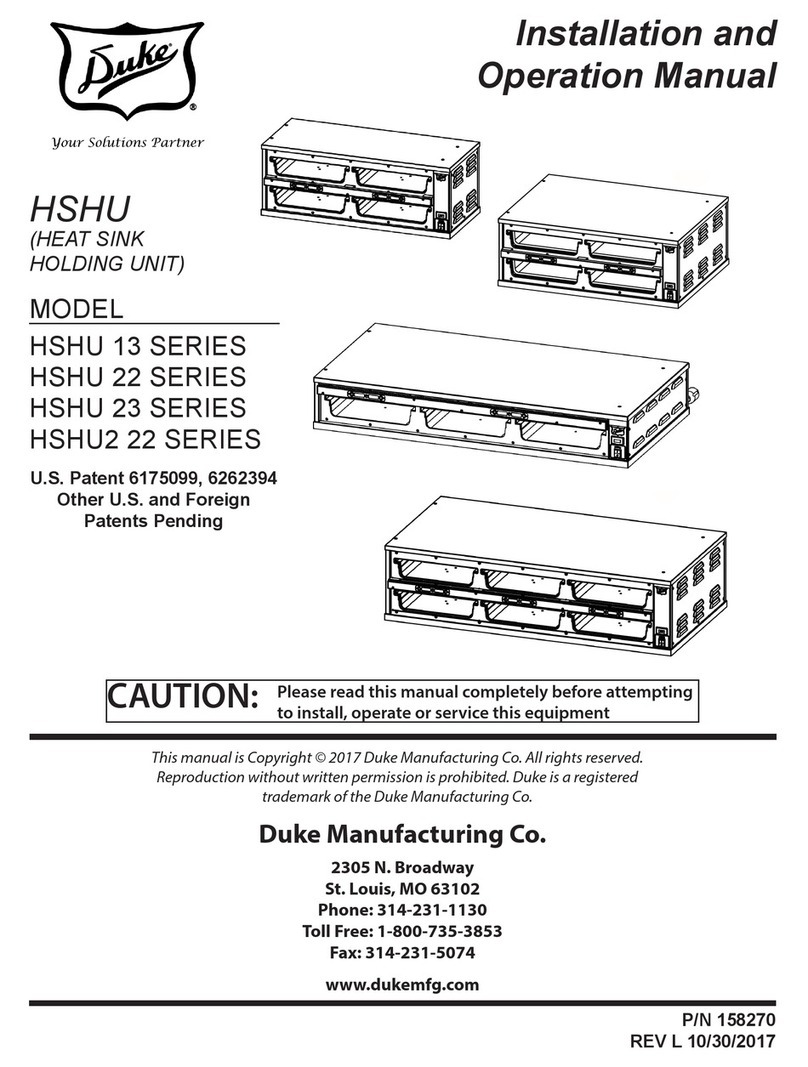
1
TABLE OF CONTENTS
SYMBOL DEFINITION .............................................................................................................................................. 2
INTRODUCTION....................................................................................................................................................... 3
INSTALLATION ......................................................................................................................................................... 4
1. MOUNTING THE RAVEN RADAR SPEED SENSOR ............................ 4
2. MOUNTING THE FLOW METER .......................................... 5
3. MOUNTING THE CONTROL VALVE ....................................... 5
4. MOUNTING THE CONSOLE AND CABLING ................................. 6
BATTERY CONNECTIONS...................................................................................................................................... 7
CONSOLE FEATURES ............................................................................................................................................ 8
CONSOLE CALIBRATION ....................................................................................................................................... 9
1. CALCULATING "BOOM CAL" ........................................... 9
2. CALCULATING "SPEED CAL" ......................................... 10
3. CALCULATING "METER CAL" ......................................... 11
4. CALCULATING "VALVE CAL" ......................................... 11
5. CALCULATING "RATE CAL" .......................................... 12
CONSOLE PROGRAMMING ................................................................................................................................. 13
1. INITIAL CONSOLE PROGRAMMING ..................................... 14
2. OTHER DISPLAY FEATURES .......................................... 16
3. SELF TEST FEATURE ............................................... 17
4. ALARM MENU ...................................................... 17
5. OFF TARGET ALARM ................................................ 17
6. AUTOMATIC RATE +/- .............................................. 18
7. LOW LIMIT FLOW SET POINT AND LOW LIMIT ALARM ................... 18
8. DISPLAY SMOOTHING ............................................... 18
9. "VALVE CAL" ..................................................... 19
10. CONTROL VALVE DELAY ............................................. 19
11. SEQUENCE TO ACTIVATE DATA-LOCK .................................. 19
12. SEQUENCE TO CHANGE DATA-LOCK .................................... 19
13. ENTER MODE SEQUENCE WITH ACTIVATED DATA-LOCK ................... 20
INITIAL SYSTEM SET-UP ...................................................................................................................................... 20
INITIAL SYSTEM FIELD TEST............................................................................................................................... 21
PREVENTIVE MAINTENANCE.............................................................................................................................. 21
APPENDIXES
1. WHEEL DRIVE SPEED SENSOR INSTALLATION AND CALIBRATION ....................................................... 22
2. SPEEDOMETER DRIVE SPEED SENSOR INSTALLATION AND CALIBRATION ........................................ 25
3. ALTERNATE BY-PASS LINE PLUMBING SYSTEM......................................................................................... 27
4. PROCEDURE TO TEST SPEED SENSOR EXTENSION CABLES................................................................. 29
5. PROCEDURE TO TEST FLOW METER CABLES ........................................................................................... 30
6. FLOW METER MAINTENANCE AND ADJUSTMENT PROCEDURE............................................................. 31
7. PROCEDURE TO RE-CALIBRATE FLOW METER .........................................................................................32
8. REMOTE SWITCH OPTION .............................................................................................................................. 33
9. HIDDEN FEATURES .......................................................................................................................................... 34
REPLACEMENT PARTS SHEETS
016-0159-745
7/98
